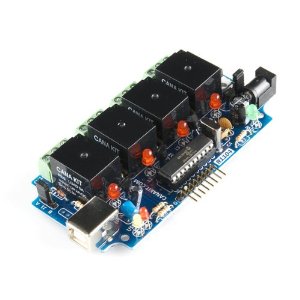It actually seems to work OK. Every time I click a button on the camera it takes another picture and goes into USB mode for 10 seconds (it retracts the lens while it does that, which is a little disconcerting - don't know if I can avoid that or not).
While in USB mode, my xdbusd script runs automatically and gets the image file off the camera.
Using the file browser after taking a few pictures shows that it does indeed delete the images on the SD card, so everything seems to be working well. Just need to fiddle with the USB cable to use it as a remote switch.
Or maybe, adopt one of the anti motion detection scripts I see on the forum to just make it take the picture automatically after I stop fiddling with the page turning, then I don't need any kind of external trigger.
Future
Naturally, this all begs to be packaged up into a slick GUI app that does the listening for the DBUS messages itself, uses libgphoto2 to fetch the photos itself, and has a fancy preview screen to show you the most recently fetched images. Don't know how likely I am to do that because the cobbled up prototype seems to work quite well.
For even more fun, I ordered one of these:
A usb controlled relay and digital I/O device. I should be able to use one of the 5V digital outputs to replace the +5V power signal on a USB cable so my computer will be able to trigger the cameras then bring the 5V back online when using the USB cable as an interface to transfer the pictures while the cameras are in USB mode.
I should also be able to use the relays to turn on and off the lights so I can use less electricity and avoid getting them overheated.
Integrating this controller with everything makes the idea of writing a slick GUI for it all even more appealing.
Wed Feb 16, 2011 update: The controller board arrived, and it works perfectly. I found a 9VDC wall wart laying around and used it to provide power for the relays. I also hooked a voltmeter to the digital outputs and tested everything by talking to /dev/ttyACM0 with kermit. I could send commands to turn on the relays and listen to them click and watch the LEDs change. I could send commands to turn on and off the digital outputs and watch the voltmeter reading change, so this looks like the perfect little gimmick for automating the camera and light control from my fedora 14 linux box.
I should be able to substitute the +5V line in a USB cable with one of the digital outputs from the controller board (the ground should already be common since the controller is getting power from a USB port on the same computer). I can then toggle the USB power to the cameras on and off by sending commands to the controller. (I tried fooling with this some, but couldn't get it to work, so just using a relay to toggle the power seems simplest).
I should also be able to use a relay to control the lights, turning them on just before I take a picture.
And I should be able to use one of the digital lines on the controller as an input to check for me pusing a button I can mount on the scanner where it is easy to reach.
